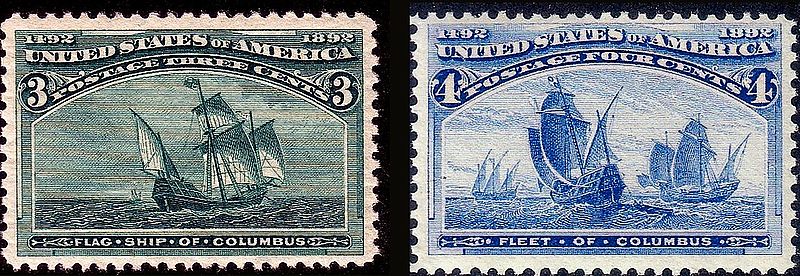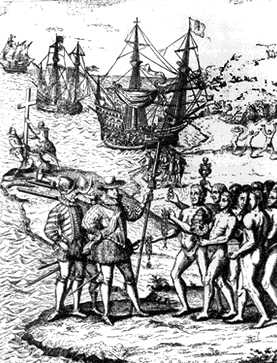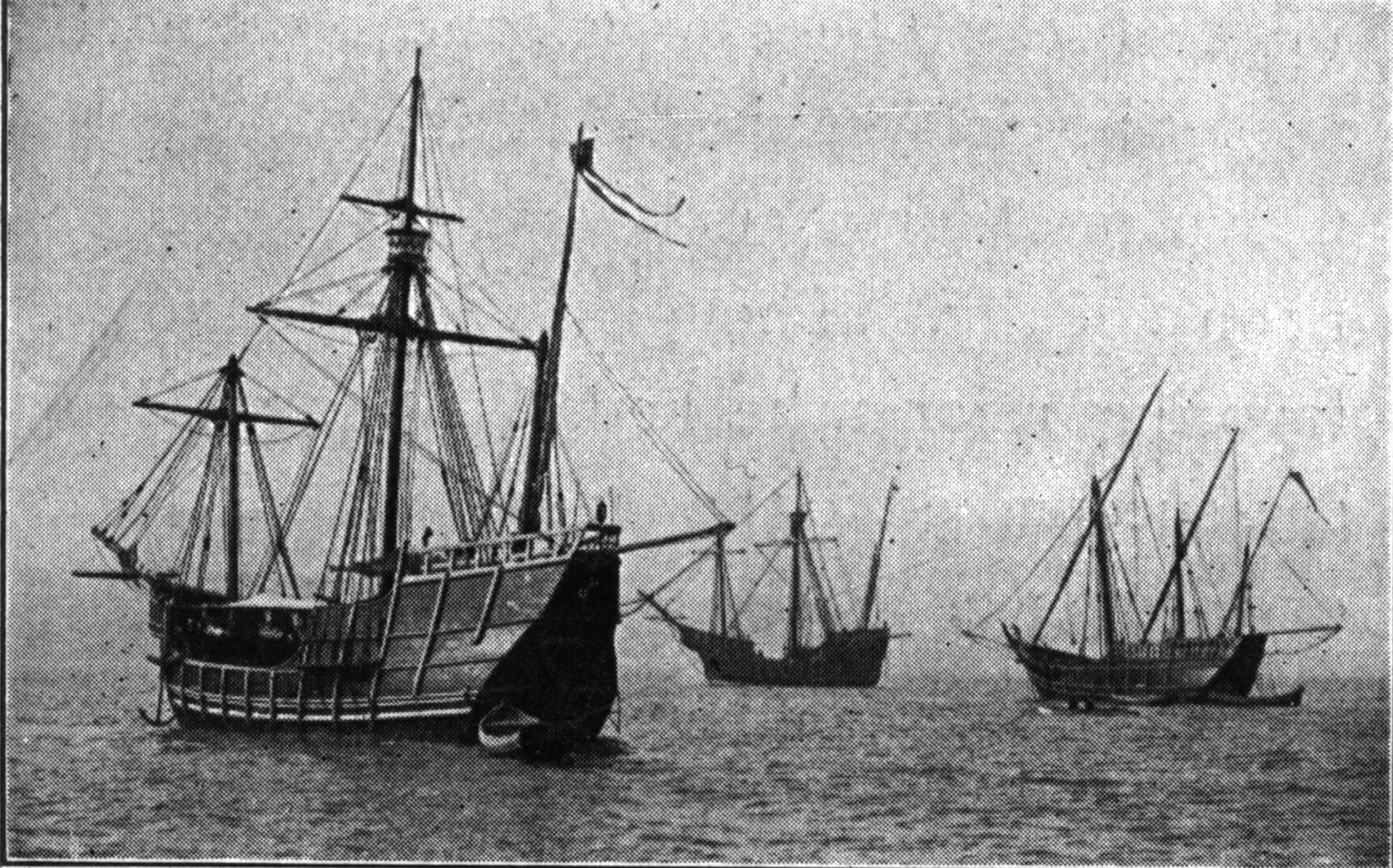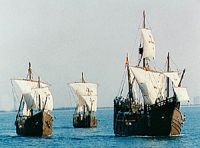
English: US Postage stamps:
Columbian issues of 1893, 3c and 4cDate 1893
Source US Post Office
400th Anniversary Issues of 1893
U.S. stamps reflecting the most commonly held view as to what Columbus’ first fleet might have looked like. The Santa Maria, the flagship of Columbus’ fleet, was a carrack—a merchant ship of between 400 and 600 tons, 75 feet (23 m) long, with a beam of 25 feet (7.6 m), allowing it to carry more people and cargo. It had a deep draft of 6 feet (1.8 m). The vessel had three masts: a mainmast, a foremast, and a mizzenmast. Five sails altogether were attached to these masts. Each mast carried one large sail. The foresail and mainsail were square; the sail on the mizzen was a triangular sail known as a lateen mizzen. The ship had a smaller topsail on the mainmast above the mainsail and on the foremast above the foresail. In addition, the ship carried a small square sail, a spritsail, on the bowsprit.





























